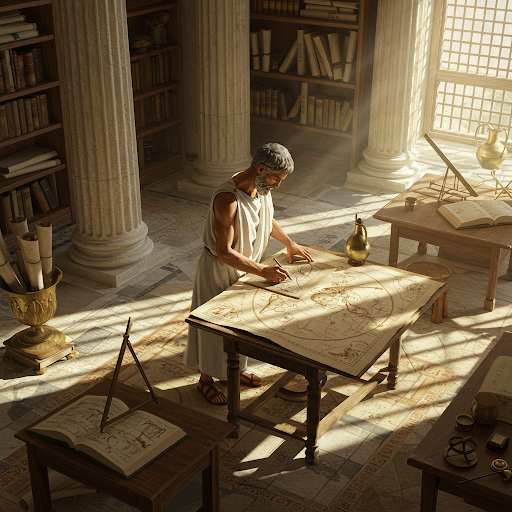The Measure of the World: Mapping the Earth, Unraveling the Cosmos.
250 BCE, Alexandria. The Library of Alexandria, a beacon of knowledge, where the world’s mysteries are measured and mapped.
Dust motes dance in the shafts of sunlight filtering through the high windows of the Library. Scrolls overflow from every shelf, and the air hums with the whispers of scholars.
Eratosthenes, his brow furrowed in concentration, traces lines on a large, parchment map. “Observe,” he declares, his voice a low rumble, “the Earth, a sphere, its surface a grid of parallels and meridians.” He points to a sundial, its shadow marking the passage of time. “At noon, in Syene, the sun casts no shadow. Here, in Alexandria, it does. By measuring the angle, we can calculate the Earth’s circumference.”
He picks up a stylus and begins to meticulously mark down measurements and calculations. “Observation, measurement, logic,” he murmurs, “the keys to unlocking the universe.” A fragment of papyrus lies near a pile of stones, bearing the inscription: “Sieve the numbers, measure the Earth, and map the cosmos.”

The Earth is a sphere, and its dimensions can be measured through observation and calculation.
A beam of sunlight pierces the gloom, illuminating a celestial globe: “Chart the heavens and unravel the mysteries of the cosmos.”
A collection of stones and measuring rods lies scattered on the floor: “Measure the Earth and discover its true dimensions.”
A scroll filled with numbers and patterns awaits: “Sieve the numbers and unlock the secrets of prime numbers.
Fill a bath tub to find the volume – Archimedes offers a new dimension to measurement.
